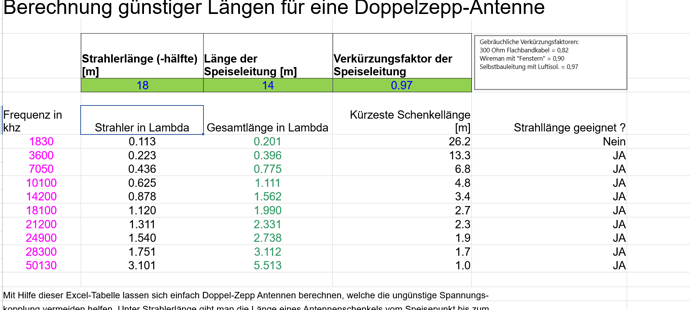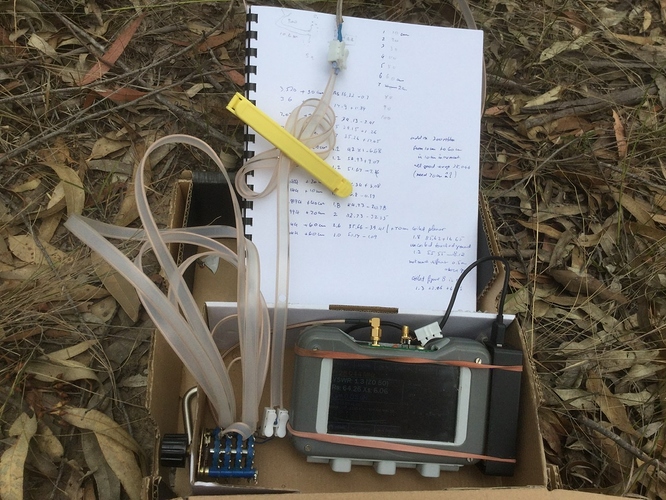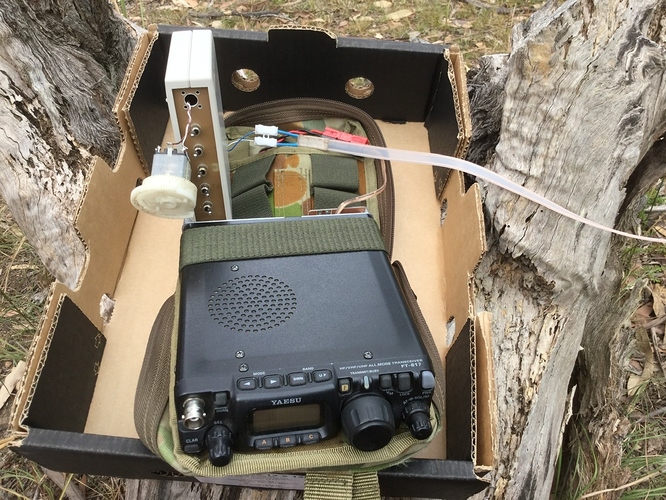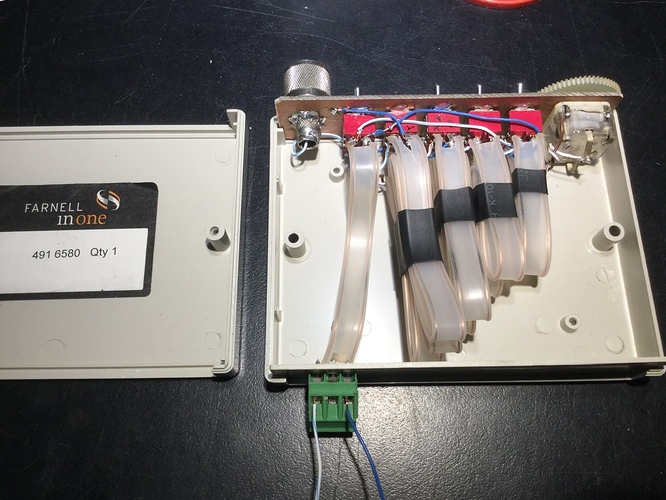Yes multiple times. Im aware of the double push tuning.
hmm you are right I might have to cut half a meter or something
thanks a lot
The No-Tuner “Tuner” idea would be another (neat) way to solve the problem:
http://www.kk5jy.net/dipole/
What is the overall length of your antenna? I certainly don’t like .9L
1.5feet of coax, 4:1, 8 meter 300ohm feed, around 9 (max 9.15m) legs
To be strictly accurate, the antenna in question is not a random length. It is a non resonant length (on the set of bands it is intended for use).
Random length suggests reeling off a bit of wire until without warning, one decides to cut it off. And that length may in fact be resonant.
Non resonant lengths are chosen carefully to avoid (mainly) the very high feed impedance of a length that is an even multiple of a half wave.
Excuse the pedantry. Inexperienced experimenters may be confused by this use of the word “random”.
73 Andrew VK1DA/VK2UH
You are correct, but when i started the post i had in mind something like my “random wire” setup that I used some C code to build a plot of the lengths to avoid. See the 10day old post above.
Later @N1EU explained to me the correct “idea” of a zepp douplet etc… maybe i should rename the topic
Tasos,
yes, fair enough. You know the Zepp name was taken from the Zeppelin airships where they tried to remove the RF from the point of ignition, so to speak.
Some years ago (1977-78) I had a business selling electronics and a bit of ham gear. A young chap came in to the shop one day asking if he could buy a Zepp antenna. After I explained a bit about what a Zepp antenna was, he went away intending to build one with bits he already had. A more mature gentleman, a former army officer who I knew as a local radio amateur, who had been hovering in the background, then came up to the counter and commented on the discussion he had overheard. Then he asked, “does that young chap realise we have more advanced aircraft these days?”
Recent discussions on this reflector go to illustrate the high level of interest in antennas. it remains a fascinating area of study.
73 Andrew VK1DA VK2UH
hehehe I had no idea!
any proposition for a better quick-setup and multiband antenna then? At the moment I can’t beat my 35.5feet wire with 4 counter wires (different lengths)
… a really hard to beat solution in terms of simplicity and efficiency - although antenna purists would argue that best radiation efficiency starts at a total radial length (sum of all radial lengths used) of about 100m…
Anyway, I would like to encourage you to perform further tests, e.g. by considering the radiator and feeder lengths used by the G5RV (full-size, half-size), by omitting/replacing the balun (e.g. by this http://www.pomonaelectronics.com/pdf/d1452_100.pdf) and fine adjust by means of RG58 coax lengths of 0.5 … 3.0m (electrical lengths of about 0.75 … 4.5m).
GL and have fun!
What bands do you want to use the antenna on?
Well, 40/20m for sure, they are the activation saviours ![]()
15m is good some times and 17m would be great.
in order of importance: 20,40,15,17,…++12,10m is a bonus
with my current config would it be better to start with trimming the legs?
22ft legs (44ft total) has always worked fine 40-10m for hundreds of operators.
Barry N1EU
will test as soon as possible!
Quite an old topic but I want to build such an antenna for field days. I got a 12m spiderbeam and would use a 300Ohm feeder.
With that in mind I would only be able to use it as an inverted V. So how does this antenna behave as an inverted V? Same characteristics as a regular dipole?
Different to a dipole in that apart from on the band where the radiating element is approximately a halfwave, on all higher bands the radiation pattern will be different to a dipole, becoming more complex as the frequency is increased. Of course the feedpoint impedance will vary widely too.
18 meter per leg?
I did mine around 9m
You’ll want a 1:1 balun, rather than an unun. Also, you’ll have to consider your feedline losses with high SWR on some of the bands. Your ATU will be able to tune it, but the lossier your feed line, the less power goes out the aerial. Open wire feeders are best for this kind of arrangement, but if this is a field aerial, that might be kinda tricky.
Note that this is coming from an old die-hard “open wire feeders, let the ATU figure it out” dipole operator here.
Recommend the ZS6BKW doublet style antenna, which is essentially what you are describing here. The dipole is not resonant on any amateur band but is fed by a length of feedline that compensates well for the reactance of the feed impedance on several bands.
I’ve been using one for a few years after observing success by Gerard VK2IO with this antenna. Some research on the web will yield essential dimensions of both the antenna wire and the feedline.
I find the atu in the KX3 handles the impedance transformations perfectly well on 80, 40, 20, 17 and 10m. The antenna is a very high impedance on 30m and 15m. An extra bit of feedline would adjust that.
Also the LDG IT100 tuner and the Elecraft qrp tuner handle it well.
73 Andrew VK1DA/VK2UH
4 segments of 300 Ohm ribbon (10, 20, 40 and 80cm) will varying the feeder length from 10 to 150cm by 10cm increment.
80m band ###130cm ### varicon +1010pF ### SWR < 1.3
40m band ### 30cm ### varicon ### SWR 1.2 - 1.4
30m band ### 80cm ### varicon ### SWR 1.8
20m band ### 40cm ### varicon ### SWR 1.3 ### 14.062 MHz
20m band ### 00cm ### varicon ### SWR 1.4 - 1.5 ### 14.200 - 14.350 MHz
17m band ### 30cm ### varicon ### SWR 1.1
15m band ### 150cm ### varicon ### SWR 1.1
12m band ### 30cm ### varicon ### SWR <1.3
10m band ### 60cm ### varicon ### SWR <1.3
73 Vk2ihl, Pascal.



